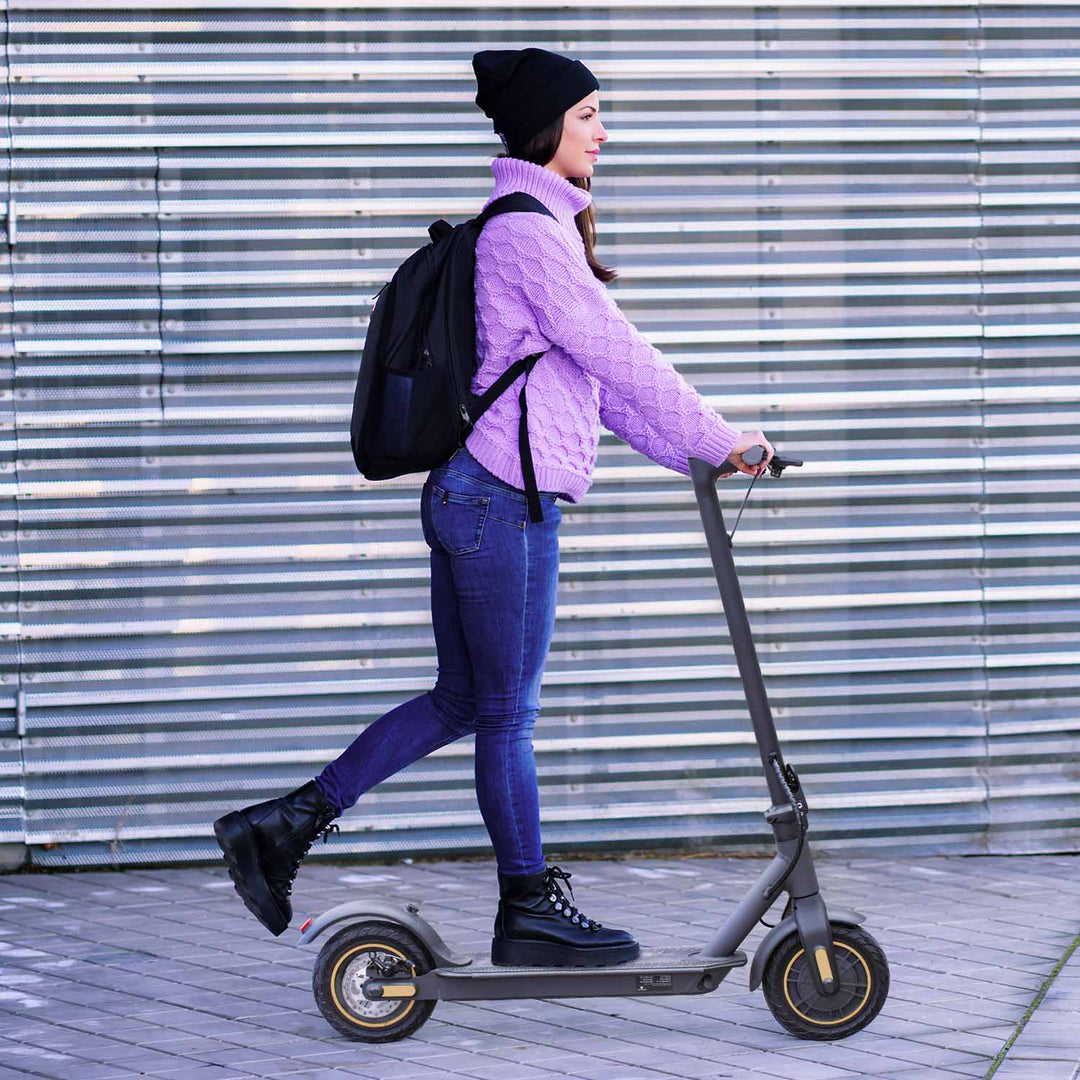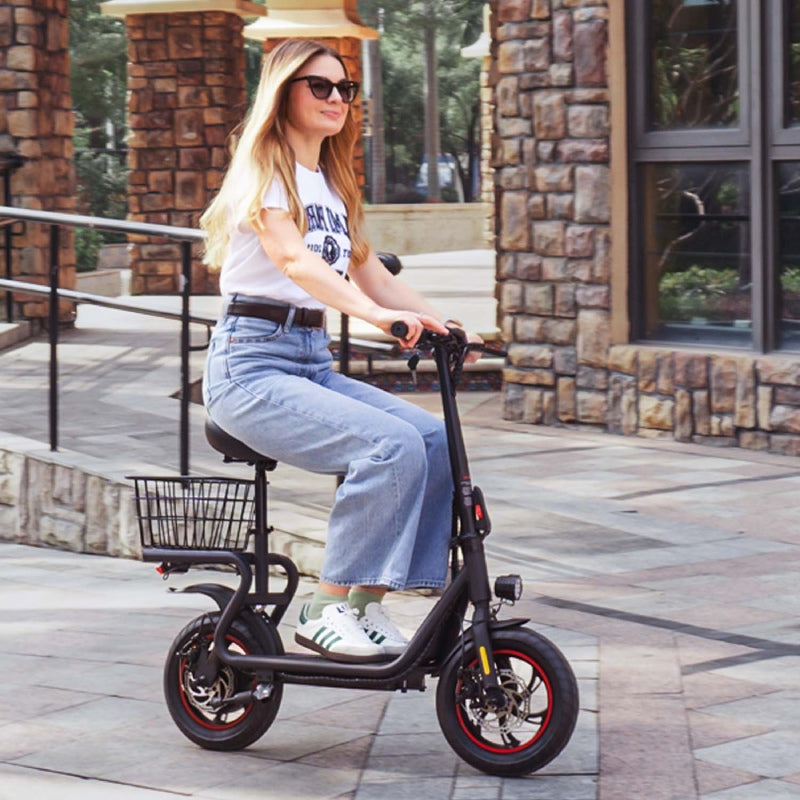What is the maximum load capacity of an electric scooter or bike?
Table of Contents
When choosing an electric scooter or bike, it's essential to consider the maximum load capacity to ensure safety, performance, and durability. The load capacity indicates the maximum weight the vehicle can handle, including the rider and any additional cargo. Exceeding this limit can lead to mechanical failures, reduced battery life, and compromised safety.
1.Electric Scooters
Standard Models
Standard electric scooters are designed for everyday commuting and leisure riding. They are typically lightweight, compact, and easy to maneuver.
The maximum load capacity for standard models usually ranges from 176-220 lbs (80-100 kg). These scooters are ideal for most adult riders but may not be suitable for heavier individuals or those carrying substantial cargo.
Heavy-Duty Models
Heavy-duty electric scooters are built to handle greater weights and offer enhanced stability and power. These models can support loads of up to 330-550 lbs (150-250 kg).
They often feature reinforced frames, larger wheels, and more powerful motors, making them suitable for heavier riders or those needing to transport additional items. Heavy-duty scooters are popular among delivery personnel, commuters with heavy backpacks, or anyone requiring extra durability.
2.Electric Bikes
Standard Models
Standard electric bikes are versatile and cater to a wide range of riders. They typically support weights between 220-330 lbs (100-150 kg). These bikes are perfect for daily commuting, fitness, and recreational riding. They offer a balance of performance, comfort, and affordability, making them a popular choice among urban cyclists.
Cargo or Heavy-Duty Models
Cargo or heavy-duty electric bikes are specifically designed for transporting goods and heavier riders. They can handle loads ranging from 400-550 lbs (181-250 kg) and sometimes even more with specialized models.
These bikes often come with sturdy frames, high-capacity batteries, and powerful motors to ensure smooth and reliable performance under heavy loads. They are ideal for families, small businesses, and anyone needing to transport large or heavy items regularly.
3.Factors Influencing Load Capacity
- Frame Material: The material of the scooter or bike frame significantly affects its load capacity. Frames made from high-quality aluminum, steel, or carbon fiber can handle more weight compared to those made from lower-grade materials.
- Wheel Size and Type: Larger and more robust wheels provide better support and stability for higher loads. Pneumatic tires also offer better shock absorption and grip, enhancing safety and comfort.
- Motor Power: A more powerful motor can efficiently handle higher loads without compromising speed and performance. Look for scooters and bikes with higher wattage motors if you need to carry more weight.
- Battery Capacity: Higher load capacities require more energy, so vehicles with larger batteries can maintain their performance and range under heavier loads.
-
Suspension System: A good suspension system can help manage the extra weight by providing a smoother ride and reducing stress on the frame and wheels.

4.User Experience Under Different Load Capacities
The user experience of riding electric scooters and bikes can vary significantly under different load capacities. Understanding how load impacts comfort, handling, and overall performance is essential for selecting the right model for your needs.
Comfort and Handling
-
Seat Comfort: Under heavier loads, the importance of a well-cushioned and supportive seat becomes more pronounced. Models designed to handle higher weights often feature seats with extra padding and broader surfaces to distribute weight more evenly, reducing pressure points and enhancing comfort during long rides.
-
Suspension Performance: The suspension system's ability to absorb shocks and maintain ride smoothness is crucial when carrying heavy loads. Advanced suspension systems, such as dual or hydraulic suspensions, are more effective in providing a stable and comfortable ride by mitigating the impact of road irregularities.
-
Stability and Control: Heavier loads can affect the vehicle's center of gravity, impacting stability and maneuverability. Bikes and scooters with robust frames and larger, more durable wheels offer better control and stability under higher weights. Features like wide handlebars and low center of gravity designs also contribute to easier handling.
-
Acceleration and Braking: Load capacity influences the acceleration and braking efficiency. Under heavier loads, acceleration may be slower, and braking distances longer. Models equipped with powerful motors and advanced braking systems, such as hydraulic brakes, perform better in maintaining optimal acceleration and braking response regardless of the load.

5.Impact of Exceeding the Maximum Load Capacity
Exceeding the maximum load capacity of electric scooters and bikes can have several adverse effects, compromising safety, performance, and the vehicle's longevity.
5.1 Safety Risks
Structural Damage: Overloading can lead to structural damage to the frame, wheels, and other components. The increased stress can cause cracks, bending, or even sudden failure, posing significant safety risks to the rider.
Compromised Braking Efficiency: Overloading affects the braking system's efficiency, leading to longer stopping distances and reduced braking power. This can be particularly dangerous in emergency situations, increasing the risk of accidents.
Handling and Stability Issues: Exceeding the load capacity can negatively impact the vehicle's handling and stability. The increased weight can make the scooter or bike harder to control, especially at higher speeds or during sharp turns, heightening the risk of losing balance and falling.
5.2 Performance Degradation
Reduced Speed and Range: Overloading the vehicle can lead to reduced speed and range. The motor and battery have to work harder to move the additional weight, draining the battery faster and reducing the overall efficiency. Riders may experience slower acceleration and lower top speeds.
Increased Wear and Tear: Carrying more weight than the vehicle is designed for accelerates wear and tear on critical components such as the motor, battery, tires, and suspension. This not only shortens the lifespan of the vehicle but also increases the frequency and cost of maintenance and repairs.
Battery Strain: Overloading places extra strain on the battery, causing it to overheat and degrade faster. This can result in reduced battery life and the need for more frequent replacements, impacting the vehicle's long-term usability and cost-effectiveness.
5.3 Warranty and Liability Issues
Voiding Warranties: Many manufacturers specify load limits as part of their warranty conditions. Exceeding these limits can void warranties, leaving the rider responsible for any damage or repairs caused by overloading.
Liability Concerns: In the event of an accident caused by overloading, insurance claims may be denied, and the rider could be held liable for any damages or injuries sustained.
By understanding and adhering to the recommended load capacities, riders can ensure a safer, more reliable, and enjoyable experience with their electric scooters and bikes. It is crucial to always refer to the manufacturer's guidelines and select a model that meets your specific weight requirements to avoid these potential issues.

6.Brand and model recommendations
Here is a detailed comparison of several popular electric scooters to help you understand the key parameters of each brand and model:
1.Segway Ninebot ES4
- Load capacity: Maximum load capacity reaches 220 lbs (about 100 kg).
- Range: Up to 28 miles (about 45 kilometers) on a single charge.
- Speed: Maximum speed can reach 18.6 mph (about 30 km/h).
- Price: About $700.
2.Xiaomi Mi Electric Scooter Pro 2
- Load capacity: Maximum load capacity reaches 220 lbs (about 100 kg).
- Range: Up to 45 kilometers (about 28 miles) on a single charge.
- Speed: Maximum speed can reach 15.5 mph (about 25 km/h).
-
Price: About $600.
3.Superfun S10 Foldable Electric Scooter
- Load capacity: Up to 220 lbs.
- Range: Up to 19 miles on a single charge.
- Speed: Up to 19 mph.
- Price: About $400.
4.Razor EcoSmart Metro Electric Scooter
- Load capacity: Up to 220 lbs.
- Range: Up to 12 miles on a single charge.
- Speed: Up to 18 mph.
- Price: About $400.
These comparisons can help you choose the best electric scooter for your needs and budget. Remember to consider the features and performance of each product before purchasing to ensure it meets your usage scenarios and expectations.
Conclusion
When selecting an electric scooter or bike, it's crucial to consider the maximum load capacity to match your needs. Always check the manufacturer's specifications and choose a model that can comfortably support your weight and any additional cargo.
Whether you need a standard model for everyday commuting or a heavy-duty version for transporting goods, there's an electric scooter or bike to suit your requirements. Prioritizing load capacity ensures a safe, efficient, and enjoyable riding experience.








Dejar un comentario